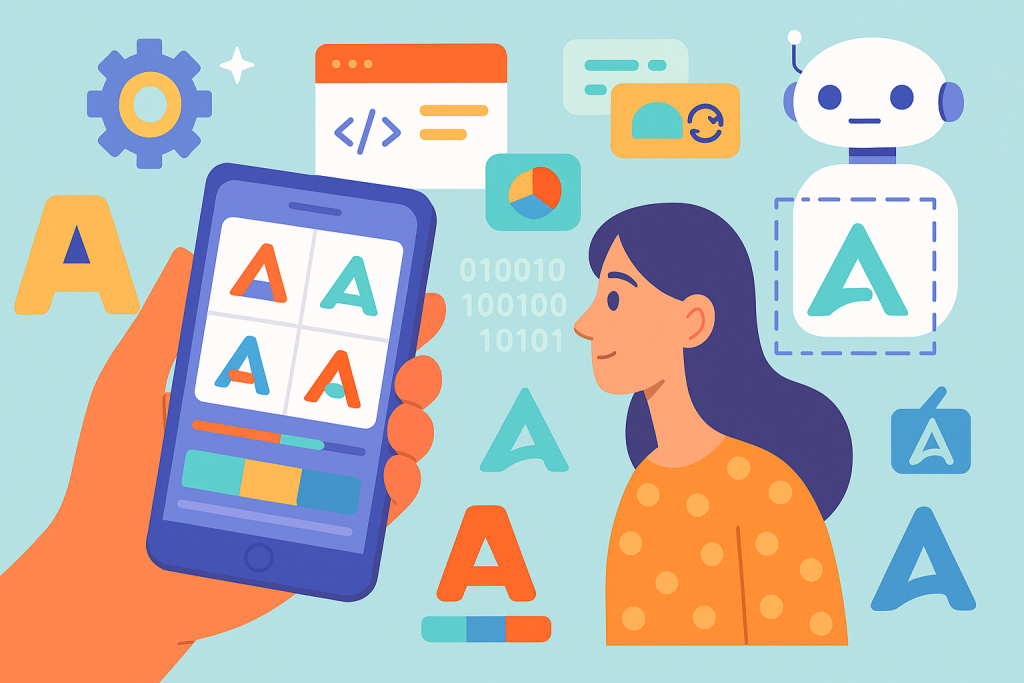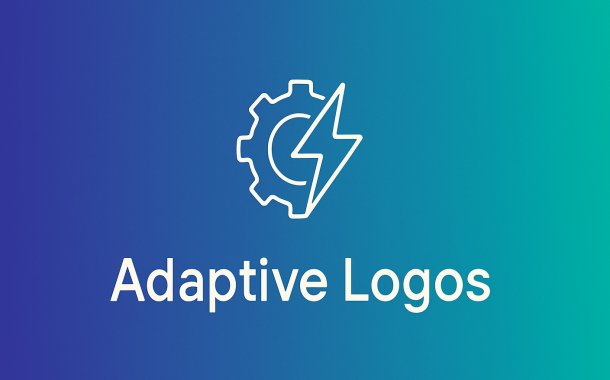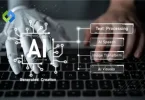Adaptive logos shift based on environment and interaction. And with the help of AI, they can now evolve in real time, making branding more personalized, dynamic, and future-proof.
Table of Contents
What Are Adaptive Logos?
An adaptive logo is a visual identity system that can change based on context while preserving brand recognition. Unlike traditional logos, which are fixed in form, adaptive logos — especially those created with Turbologo — can adjust seamlessly to different platforms and use cases.
- Alter colors, shapes, or layouts based on the platform
- Respond to user behavior or preferences
- Scale dynamically for different screen sizes and media types
- Reflect real-time data (like location, weather, or trending topics)
Think of adaptive logos as living brand expressions — flexible yet consistent, responsive yet recognizable.
Real-World Examples
- A music app’s logo that pulsates to the rhythm of the currently playing song
- A climate-conscious brand’s logo that shifts colors based on air quality in a user’s location
- A retail logo that adjusts its look during holiday seasons or flash sales
Now, with AI, these changes can happen automatically — no manual intervention required.
How AI Powers Adaptive Branding
AI adds the missing piece: intelligence. It enables logos to change not just based on rules, but based on patterns, preferences, and predictions.
Here’s how it works:
1. Machine Learning (ML)
AI models analyze user behavior, time of day, location data, or engagement metrics to determine which version of a logo would be most relevant or effective at a given moment.
Example: If users from a specific region interact more with blue-toned branding, the system might serve a variant with blue hues for higher engagement.
2. Computer Vision
In cases where logos are displayed alongside dynamic content (e.g., video thumbnails, user photos), computer vision allows logos to harmonize with their surroundings by adjusting contrast or shape automatically.
3. Generative Design
Using generative AI, logos can create new visual elements on the fly, staying within brand parameters but adapting style or form to the context. By integrating this flexibility, Brand Identity Services can deliver adaptive designs that reinforce recognition across different platforms
4. APIs and Automation Tools
Branding systems can be integrated into content management platforms or apps via APIs, allowing the logo to respond to external data triggers — such as sales events, weather conditions, or device type.
Step-by-Step: Building an AI-Driven Adaptive Logo System

Step 1: Design a Modular Logo System
Break your logo down into components:
- Core icon or shape
- Typeface and layout
- Color palette variants
- Motion or animation styles
Ensure each element is scalable and interchangeable, yet visually coherent in all combinations.
Step 2: Define Contextual Variables
Decide what data your logo should respond to:
- Device or screen resolution
- Geographic region
- Time of day or season
- User behavior (clicks, preferences)
- App theme (dark mode, accessibility settings)
Step 3: Train a Machine Learning Model
Use historical engagement data (or third-party analytics) to:
- Predict which design variants perform best under certain conditions
- Optimize logo presentation for user interaction and attention
Step 4: Implement Dynamic Rendering
Integrate with front-end systems using JavaScript, CSS variables, or SVG animation. For example:
- Use a media query to adapt logo layout for mobile
- Call an AI API to switch logo versions based on real-time input
- Apply generative styling using AI tools like RunwayML or Processing
Step 5: Test, Learn, and Evolve
Run A/B tests to see which logo versions perform best. Use feedback loops to update your ML model and refine adaptive behaviors.
Tools and Resources for Creating Adaptive Logos with AI
| Tool / Platform | Use Case |
| TensorFlow / PyTorch | Building and training ML models |
| RunwayML | Generative design and AI-based animation |
| Google Vision API | Context-aware adaptation and visual analysis |
| Figma + FigJam | Modular logo design system planning |
| Adobe After Effects + Lottie | Animated logo variants for different contexts |
| Netlify / Vercel + APIs | Real-time rendering and context detection |
These tools allow you to blend design, code, and intelligence, making your brand reactive and responsive.
Adaptive vs. Static vs. Responsive Logos
| Feature | Static Logo | Responsive Logo | Adaptive Logo (AI-Powered) |
| Layout Flexibility | None | Varies by screen | Changes based on data/context |
| Personalization | None | Limited | High — user or environment-driven |
| Real-time Adjustment | No | No | Yes |
| Intelligence | Manual design | Rule-based scaling | AI/ML-driven decision-making |
While responsive logos scale and reformat, adaptive logos evolve — they go beyond layout and into strategy and storytelling.
Tips and Pitfalls of Implementing Adaptive Logos
Tips:
- Start with the rules before using AI. Build a responsive system first, then add intelligence gradually.
- Test across devices. An adaptive logo must look great on smartwatches, desktops, and everything in between.
- Maintain consistency. Even when adapting, the logo must feel familiar — a unifying symbol of your brand.
Pitfalls:
- Too much variation. If the logo changes too often or too drastically, it can confuse your audience.
- Neglecting accessibility. Contrast, motion sensitivity, and readability must be preserved in all contexts.
- Forgetting offline use. Ensure that your logo still works in static formats (print, merchandise, packaging).
FAQ: Adaptive Branding and AI
Can a logo be too adaptive?
Yes. Over-personalization can lead to inconsistency. Always keep a central visual identity as the anchor.
How do I balance branding guidelines with AI-driven changes?
Define clear rules and “guardrails” — brand colors, fonts, icon shapes — and let AI explore only within those parameters.
Is adaptive branding expensive to implement?
Not necessarily. You can start with simple variants and grow over time. Cloud-based tools and APIs make experimentation accessible.
Conclusion: Your Logo, Reimagined for Real Time
As branding becomes increasingly dynamic, adaptive logos are the natural next step. With AI, brands are no longer limited to static identities — they can react, respond, and resonate with their audiences in real time.
Designers and brand strategists now have the opportunity to craft logos that are beautiful and intelligent — logos that adapt without losing meaning, evolve without losing identity, and engage without losing consistency — all while upholding the brand’s core identity and digital brand assets.
Article by Turbologo Experts
For more insights into modern branding and AI-powered design, visit the Urbologo Blog














